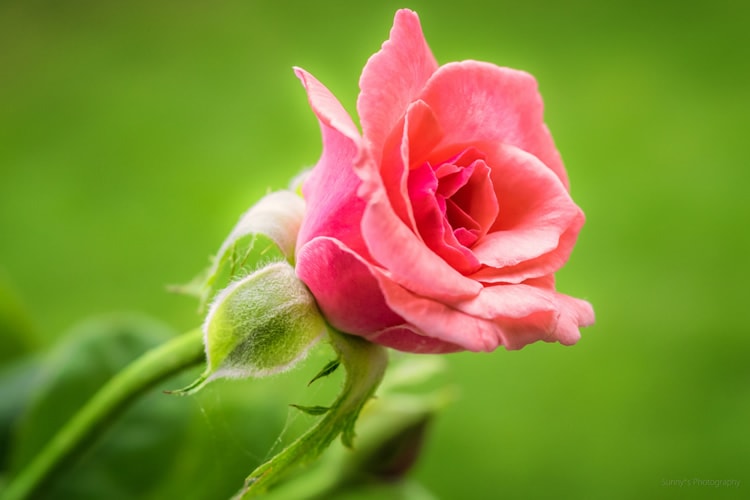Flowers, plants and natural landscapes are favorite subjects for amateur and professional photographers.
Whether you want to capture the small bouquet on your dining table, clusters of flowers in your garden, or that beautiful landscape on a trip, there are specific techniques you can employ to bring your subject into the best light.

image by Sunny [1]
Basic Rules to Remember
There are basic rules that make floral photography [2] effective. If you want to capture the ideal shot, keep these essentials in mind:
- Use a Tripod: A tripod will enable you to focus on the element you want to highlight in your photographs. By investing in a sturdy tripod [3], you can adjust the legs to get closer or farther away.
- Pay Attention to the Weather: Clear blue skies and lack of cloud cover will not provide the optimal lighting for your shots. The harsh sunlight will result in too much contrast, therefore not displaying your flowers in the best light. Use reflectors to help bounce the light in the right way for the image that you are trying to achieve. Cloud cover is ideal for photo shoots.
- Digital Camera Settings: Pre-setting your camera [4] to the right settings will prepare you to take the best shot. Generally, you should set your ISO to the lowest available, usually 100 or 200. Set your balance to daylight mode and use the single-shot mode, instead of the continuous setting.
Practice
To fine-tune your ability to take great photographs of flowers or landscapes, it is necessary to practice your skills. For example, you could order a bouquet and observe how your flowers bloom once they are removed from the box.
Over the course of a few days, you can capture several shots that show the vibrant colors and petals in your arrangement. It is great way to learn how you want to experiment and then take these techniques into the field.
Frame your Plants and Flowers
Chances are when you take a shot of a flower there are distracting elements present in the view. In a garden, perhaps there are weeds that appear in the background. In a landscape maybe there is a building that appears in the corner of the shot.
Eliminate these distractions from your picture and frame it so that your flower is the center of attention. Here are some tips you can utilize:
- Remove the distraction (if possible)
- Change your angle
- Crop toward your subject
- Use aperture to decrease the depth of field
By consistently working toward framing your shot, you learn to put your plant or flower at the heart of your photograph.
Maximize Your Close-Up Shot
To capture the dewdrops on a flower or lines on a plant petal [5], you must zoom in on the subject. To adequately get these details, use a specialized macro lens [6] ranging from 50mm to 200mm. When you focus on the entire flower, you lose the sharpness of the shot. Instead, hone in on one petal or part of the flower to provide the contrast you need to accentuate the beauty and details of your subject.
Experiment
You want your photograph to reflect your personal style. Experiment with backgrounds, filters and different lighting to put your personal imprint on your photograph. By taking a calculated risk, you may be able to capture a never-before-seen shot.
Flowers and plant photography is appealing to many photographers. Preparing with the right equipment and settings will help you remove the guesswork when it comes time to take your picture. Practice and experiment at home so that you can capture great shots when you are in the field.